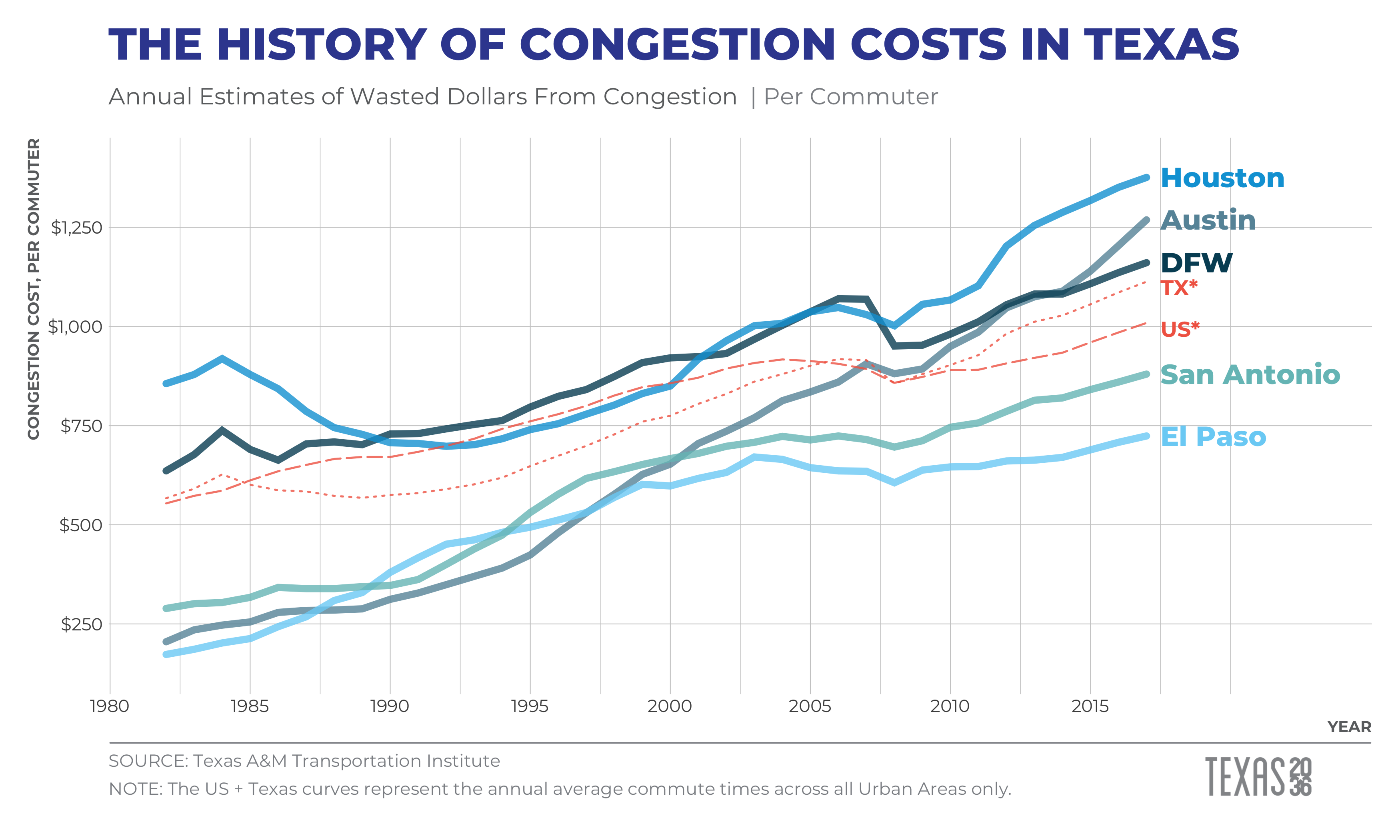Texas, it’s time to talk about our traffic.
The robust Texas economy has delivered obvious benefits, from millions of new jobs to capital investments that are transforming Texas communities.
But there’s a down side of economic growth, as anyone who tried to drive anywhere over Labor Day Weekend was likely reminded: congestion on our roads and highways.
The recently released 2019 Urban Mobility Report,from our partners at the Texas A&M Transportation Institute, spells out these challenges. It’s capped by the blunt but instructive tagline, “Traffic is Bad and Getting Worse.”
The reality of the report is that economic growth is part of the problem. More people are commuting to work, more businesses are transporting goods, and more consumers are buying products online and waiting for more trucks to deliver them.
The report also shows the financial burden that congestion imposes. We lose productivity time and waste gasoline we’ve bought sitting in traffic, to say nothing of the time lost with family or the frustration of being stuck on a road. Look at this useful data tool showing congestion facts in American cities and then consider:
- Between 2014 and 2017, congestion across Texas’ urban areas increased 8 percent.
- In 2017, the average urban commuter in Texas spent 54 hours in traffic, at a personal cost of $981.
- Texas has the biggest truck-freight bottleneck of any state, according to the American Transportation Research Institute. And the number of trucks on our roads will keep growing — highway tonnage carried by trucks is expected to more than double from 1.2 billion tons in 2016 to 2.5 billion tons in 2045, according to the Texas Department of Transportation.
- Traffic impacts all communities in real ways, but commute times are longest in urban areas — and Texas is an increasingly urban state. More than 90 percent of the state’s total population growth between 2010 and 2050 is projected to come in urban areas, the Texas Demographic Center tells us.
The upshot is that congestion in Texas needs major attention, and not just because it costs us money, happiness and time. Texas’ rapid growth will only make this challenge tougher.
And that brings us back to the TTI report, which catalogues a range of solutions and highlights that Texas isn’t deploying enough of any of them. All congestion-relief strategies should be on the table, the experts tell us, from leveraging available financial tools, to increased productivity of existing roads, to creative work schedules that stagger commute times, to denser development and land use, to construction of more roads in order to add capacity.
Texas 2036 wants to put these ideas and many others on the table.
Rhetoric won’t get us moving. But a candid conversation, real data, and some creative, comprehensive problem-solving might just break the bottleneck.

